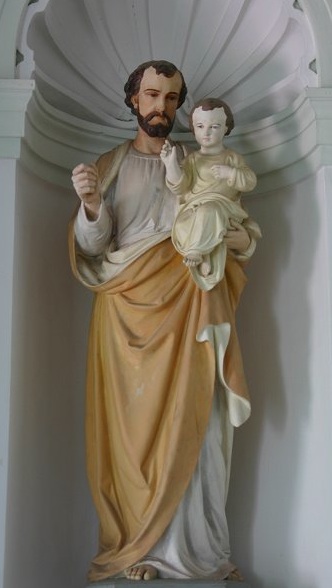 I must confess that I was pretty harsh, when it came time to pass judgment on that Easter-free front page of the dead-tree-pulp edition of the Sunday Washington Post.
I realize that all of those pre-Christmas ad sections tend to get the attention of editors, so Christmas is harder to avoid. But Easter is the most important day on the calendar of those who claim the faith to one degree or another, even "Easter-only Christians."
I must confess that I was pretty harsh, when it came time to pass judgment on that Easter-free front page of the dead-tree-pulp edition of the Sunday Washington Post.
I realize that all of those pre-Christmas ad sections tend to get the attention of editors, so Christmas is harder to avoid. But Easter is the most important day on the calendar of those who claim the faith to one degree or another, even "Easter-only Christians."
As it turns out, there was a wonderful Easter story located inside that edition of the Post and I, for one, think it should have been on A1. Perhaps the editors did not know what they had, when religion-beat pro Michelle Boorstein turned in her news report on the heart-rending, yet also strangely triumphant, death of a popular priest in a Maryland suburb of Washington, D.C. The headline also fell short of the symbolic details that were woven through the story: "Md. Priest's Death Adds Meaning to Holy Week -- Parishioners Find Symbolism in Loss." Here's the top of the C1 story:
Dying on Holy Thursday -- the day marking the creation of the priesthood -- on the floor of his parish's sanctuary, under the eyes of a statue of the patron saint of happy deaths, the Rev. G. William Finch left his Rockville congregation with powerful Easter symbolism.
Even as St. Raphael Catholic Church, one of the region's few Roman Catholic megachurches, mourned its pastor, members said yesterday that the imagery was striking. Not only did Finch die just after he finished saying Mass, surrounded by parishioners praying the rosary and priests anointing him, next to the statue of Saint Joseph, but it happened just before Easter, a time when Christians focus intensely on mortality.
That left Finch's community grief-stricken and inspired by the memory of a jolly 55-year-old who loved red wine, Italian food and dancing fervently.
"As tragic as it was, it was kind of perfect," John Reutemann, a seminarian who grew up at St. Raphael's, said yesterday afternoon in the sanctuary, which was quiet except for the organist practicing for last night's Easter Vigil and for today's services.
From there, Boorstein heads straight into a summary of the priest's accomplishments in this parish. In a way, this is simply old-fashioned Catholic stuff -- only in an age in which so many demographic factors make the "old Catholic" news sound almost miraculous.
A question hovers in the background: Did this popular priest joyfully work so hard that his heart just gave out?
Finch, a St. Mary's County native, charged into St. Raphael's parish seven years ago with a burst of energy. He took a popular nursery school with almost 200 students and started adding elementary grades. There are now 100 students from kindergarten through third grade, and the school is set to break ground on a new building this year.
He remodeled the church, commissioning Italian artists to create a marble altar, designing a garden, lightening the color of the wooden pews and dragging out of storage statues of Mary and Joseph that would ultimately play a role in his passing. He expanded the youth program for St. Raphael's, an 11,000-member church with seven Masses every Sunday and a compound of buildings that almost fills a suburban block.
I had a hunch, when the story mentioned the remodeled sanctuary, that the St. Joseph statue was going to figure into the plot of this drama. You see, this is the kind of emotional, traditional art that has become rare in modern American Catholic sanctuaries, due to the harsh judgments of modernists. I thought that, for sure, we were going to find out that Finch was the an old-school priest from some kind of bullet-proof Catholic family.
But, no, there was another interesting twist in this Easter story. If anything, I think that Boorstein could have played this detail higher -- put that's arguing about where to put a particular rose in an arrangement that's going to be touch people no matter what you do with it (unless the readers simply cannot be moved by stories about faith).
Finch, born a Baptist, converted to Catholicism in his 20s after meeting nuns while doing construction work on a Carmelite monastery. ...
Yesterday, clergy and parishioners were racing around trying to organize the most complex liturgical symphony of the year without the conductor.
"For him to die on Holy Thursday, his death makes more intense all the basic questions, the mysteries we are trying to explore this time of year: What is our faith? What is our life?" said the Rev. Terry Ehrman, who anointed Finch as he was dying. "It makes it all more alive."
Holy Saturday, of course, is the traditional day for converts to enter the church. Then comes Easter.
What a story.
